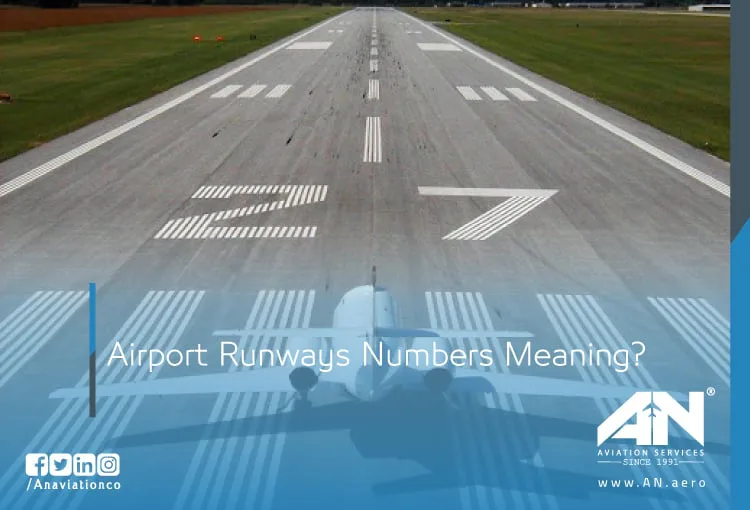
Airport runways may look like a simple stretch of pavement, but they are meticulously designed and marked to provide clear guidance to pilots. One of the most striking features of any runway is the large white numbers painted on either end. These runway numbers aren’t random—they hold specific meanings related to the runway’s orientation and function. Whether you’re a curious traveler or a budding aviation enthusiast, understanding these numbers is a fascinating way to appreciate the complexity of aviation operations.
How Are Runway Numbers Determined?
The numbers on a runway are derived from its magnetic heading, or the direction it points toward in relation to magnetic north. This means that the orientation of each runway is expressed as a rounded magnetic azimuth measured in degrees.
For example, if a runway points toward a heading of 90 degrees, it will be marked as “09” (the last digit is omitted for simplicity). Similarly, a heading of 180 degrees will correspond to the runway number “18,” while a heading of 360 degrees (essentially due north) becomes “36.” These numbers provide crucial information to pilots, allowing them to align their aircraft with the correct runway during takeoff and landing.
Why Magnetic North Matters?
Runway numbers are based on magnetic north rather than true north because airplanes rely on magnetic compasses for navigation. This ensures consistency between what pilots see on their instruments and the physical markings on the ground. However, the Earth’s magnetic field is constantly shifting, which occasionally necessitates updates to runway numbers to reflect changes in magnetic heading.
For instance, a runway that was once aligned with a magnetic heading of 180 degrees may shift slightly over the years. When the deviation reaches a point where the heading rounds to a different nearest 10 degrees, the runway number will be updated accordingly.
Dual or Parallel Runways
At larger airports, it’s common to find multiple runways that are oriented in the same direction. To differentiate between these parallel runways, additional letters are added to the runway numbers. These letters—L, C, and R—stand for Left, Center, and Right, respectively.
For example, at an airport with three parallel runways aligned on a magnetic heading of 90 degrees, the runways might be labeled 09L, 09C, and 09R. This helps pilots and air traffic controllers identify the specific runway to use during busy operations.
The Importance of Prevailing Winds
Another factor that influences runway orientation is the direction of prevailing winds. Aircraft take off and land most efficiently when heading into the wind, as this provides additional lift and reduces the required runway length.
As a result, airports are often designed with runways aligned to match the most common wind patterns in their region. For example, in areas with consistent west-to-east winds, runways will typically be oriented east-west. The runway headings and numbers ensure that pilots always know the direction they’re facing in relation to the wind.
Runway Markings and Thresholds
The runway markings you see while flying or taxiing play a critical role in helping pilots navigate safely. The large numbers and letters at each end of the runway indicate its designation, while additional markings, such as threshold markings, identify the usable portion of the runway for landing and takeoff.
Threshold markings are typically painted as a series of parallel white lines at the beginning of the runway. These lines ensure that pilots have a clear visual reference point when approaching the runway, even in low-visibility conditions.
Runway Headings and Compass Accuracy
To align perfectly with a runway, pilots rely on runway headings, which are displayed on their aircraft’s compass. The heading provides a real-time reference to ensure that the aircraft is aligned with the runway’s orientation.
For example, if a pilot is approaching a runway labeled 27, their compass should read approximately 270 degrees as they line up for landing. This alignment ensures a smooth and safe approach.
A Closer Look at Magnetic Variations
It’s worth noting that magnetic variations can occasionally cause slight discrepancies between the actual runway heading and the number painted on the runway. However, these variations are minimal and are regularly accounted for by airport authorities.
Airports with significant magnetic shifts may repaint their runway designators to maintain accuracy. These updates are carefully coordinated to minimize disruptions and ensure that pilots have the most up-to-date information.
The Bigger Picture: Navigating the Skies
Understanding the meaning behind runway numbers highlights the precision and planning that goes into aviation. From the orientation of runways to the role of magnetic headings and prevailing winds, every aspect of runway design is carefully calculated to optimize safety and efficiency.
The next time you’re boarding a flight and catch a glimpse of those white numbers on the runway, you’ll know they’re more than just markings—they’re a testament to the meticulous planning that keeps air travel running smoothly.
Conclusion
Runway numbers serve as a vital navigational aid for pilots, offering clear and concise information about a runway’s orientation and alignment. These numbers, derived from magnetic headings, work seamlessly with onboard instruments to guide aircraft safely during takeoff and landing.
Whether it’s accounting for prevailing winds, managing parallel runways, or updating markings to reflect shifts in magnetic north, the science behind runway numbers demonstrates the remarkable coordination that defines modern aviation. It’s just another example of how attention to detail keeps the aviation industry soaring.
Let this insight deepen your appreciation for the intricate systems that make air travel possible, ensuring safe journeys for millions of passengers every day.

